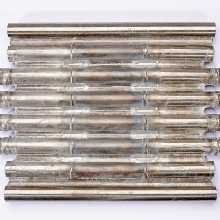Short Information
In order to further increase the efficiency of coal fired power plants and reduce emissions higher steam temperatures and materials with improved mechanical properties under high temperatures are required.
Aim of the project is to implement Ni-based alloys in coal fired power plants in order to obtain maximum steam temperatures of > 700 °C in the steam cycle. A numerical assessment of stresses and material investigations of small and large scale specimen will be performed. A field test in a 725 °C test rig (GKM Project HWT III) will demonstrate the feasibility of the implementation of these materials.
The NiBalO725 project is co-funded by the European Union through the Research Fund for Coal and Steel (RFCS) Program (Grant Agreement No: RFCR-CT-2016-709976).
Objectives
Please find more detailed information in the pdf on the right
Consortium
Work package structure of the project
Description of the work packages
Objectives
- Monitor the execution of the project according to the RFCS contract, the consortium agreement and the work programme
- Represent a single contact point towards the RFCS
- Facilitate the communication between the partners
- Provide the required reports
- Organize dissemination activities
Objectives
Manufacturing of material, weldings and components. Different types of materials samples will be required for the project: membrane panels, thin walled (tubes) and thick walled (pipes) components will be investigated during the project to examine all relevant parts of future 725° C boilers. The following samples will be manufactured:
- Thin and thick walled circumferential weloding seams for the qualification of the welding process and all relevant birth certificates including basic investigations of weld properties following the principles of EN standards
- Membrane Panels, Tube and Pipe samples for the investigation of material behaviour in the laboratory tests
- Tube and Pipe Samples for the Field Test in 725 HWT GKM III
Objectives
The material qualification will provide the necessary data for the evaluation of materials in the temperature area of 725° C. This data is required for the design of the field test as well for future power plants as well as the approval of the material by the notified body prior to the implementation into the test rig. Also the data will be necessary for the implementation into numerical models.
Objectives
The main objective of this WP is to understand the load and temperature distribution in future 725° C boilers and to derive stress-strain scenarios necessary for the qualification of materials in these boilers. Also structural mechanical calculations will be adapted in order to provide necessary data for the damage development. These models will be verified in the field test where the strain development of the components will be monitored and can be directly compared with the numerical results.
More specifically this workpackage contributes to the:
- Identification of Load Situation in future 725° C boilers
- Identification and prediction of exhibited material spatial temperature fields under varying load conditions for the critical areas
- Improvement of numerical tools capable of predicting the mechanical behavior of the new proposed material properties and geometries
- Evaluation of creep behaviour
Objectives
Investigation of material behaviour in real environment under real load conditions (temperature gradients, oxidation by steam atmosphere and flue gas in the boiler) and verification of numerical models. Therefore components will be manufactured from improved Ni-based Alloys, especially the investigated Alloy 740H. These components will be implemented both into the superheater (boiler internal) and in the outer test rig (piping). The thick-walled component (pipe) will contain a similar weld for investigation. Grosskraftwerk Mannheim will provide the access to the power plant and the possibility to include the components into the high-temperature materials test rig, phase III.
Objectives
- Characterisation of material states after welding initial state and determination of the damage evolution and precipitation structure after testing for test panels, and cross-weld specimen after creep rupture, low cycle fatigue and creep-fatigue test
- Evaluation of influence and effects on material properties after operation







